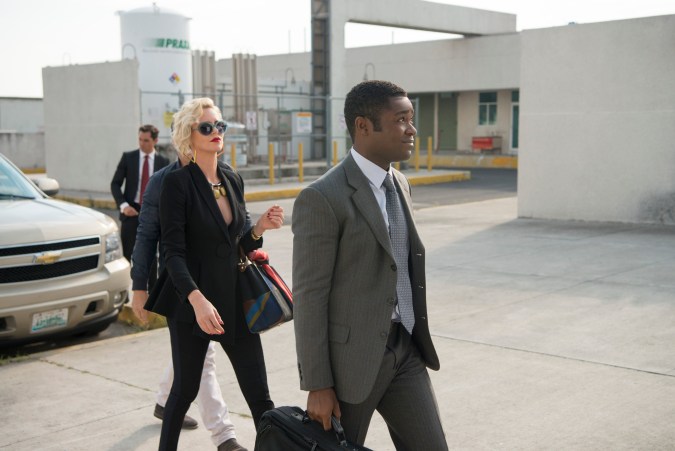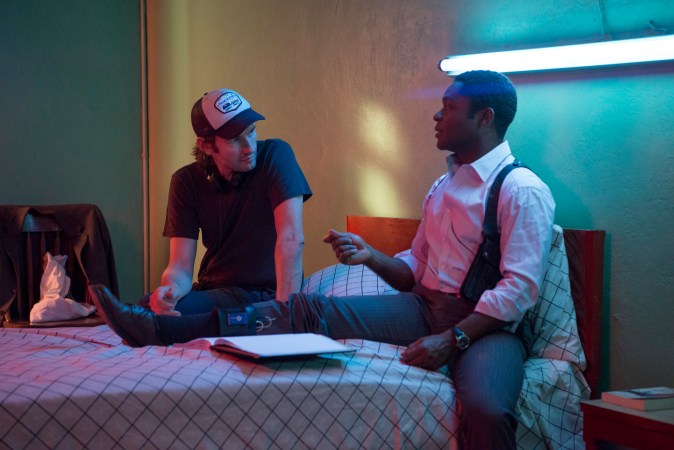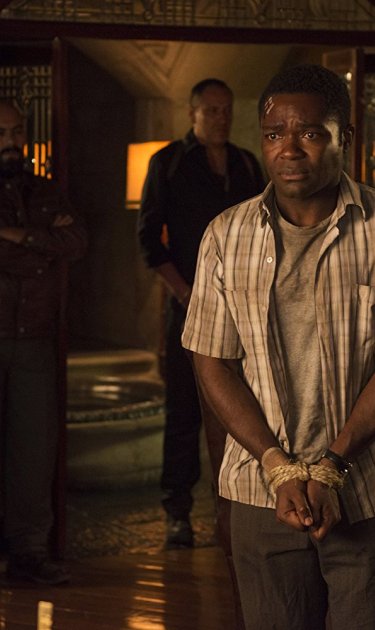It would be much easier to completely dismiss Nash Edgerton’s comedy Gringo if it was outright offensive and grotesque in its depiction of Mexico, but it’s not. It’s instead just typical of US productions in its lack of interest to dig deeper beyond sensationalist headlines, and misses the opportunity to be an antidote to lazy generalizations.
The real problem is not that Gringo presents Mexico as a lawless, inescapably dangerous, crime-ridden land or as a playground for gringos to carry out their dirty deeds virtually without consequences, but that so many other movies like this exist. Mexico, and most of Latin America for that matter, has become a shorthand for these notions and Gringo does very little to counterbalance the detrimental effect. It’s not the worst of its kind, just one more.
In this action-packed narrative, mild-mannered Harold (David Oyelowo), a Nigerian immigrant who lives in Chicago, believes he’s playing by the rules. As an executive at a pharmaceutical company, he’s been tasked with supervising production of potent cannabis pills at their factory in Mexico. Behind his back, his superiors Richard (Joel Edgerton) and Elaine (Charlize Theron) have been selling the pills to drug cartels. Meanwhile in the US, marijuana legalization is spreading and the company thinks they’ll finally be able to offload their product stateside without breaking the law. On a trip to Mexico City, his bosses – unbeknownst to him – cut ties with the cartel. Harold becomes the scapegoat and a wanted man by the criminal underworld.

Theron is tasked with delivering the most racist and ignorant lines of dialogue. While meeting with one of their Mexican employees she notices a wall with photos of the man’s children and utters, “Don’t they sell condoms down here?” Later, she uses the old gringo trope of adding an “o” at the end of an English word to pretend it’s Spanish: “understand-o” or “wait-o.” Edgerton’s character chimes in with a silly “Quiero Taco Bell” comment, and an Australian, who is part of the convoluted story, explains that his girlfriend shouldn’t worry about getting another margarita because Mexicans, “brush their teeth with tequila.”
“The real problem is not that Gringo presents Mexico as a lawless, crime-ridden land… but that so many other movies like this exist.”
As outrageous as these they sound, it’s always clear that we are meant to look at these characters with disgust given that they come across as cartoonish examples of an insensitive imbecile in a foreign country. They are never portrayed as heroic, but always driven by greed. In a mixed crowd of critics and regular audience members some of the offensive comments were received with a gasp, but the loudest laughs came from the physical comedy or the explicit violence. People get shot in the head on numerous occasions, seemingly for a dark comedic effect.
The fast-paced editing and handheld camera that follows Harold on this journey to save his life amp up the excitement, but offer no artistic innovation of any kind. Their main purpose is to create anticipation and to surprise us when someone is run over, hit, or killed suddenly. Chicago is visualized as a cool and elegant world seen mostly through office spaces, and Mexico as a gritty, crowded, and disheveled place where street markets, ugly motels, and barren terrain are the norm. While the press notes claim that the cinematographer and production designer wanted to make Mexico’s bright colors prominent, that’s not on screen with the exception of a carnival that serves as a background for an action sequence. Generic rancheras provide a soundtrack for most of the scenes set south of the border.

Harold, as opposed to the other gringos in the movie, has a more profound connection to Mexico as we see him interact with acquaintances he’s made on his past business trips. His most significant interaction with everyday Mexicans is at a motel in Veracruz, where he befriends the two shabbily dressed brothers that run it. He recruits them to outsmart his boss in what’s perhaps the funniest scene in the film, one that thrives on the language barrier as an “El Santo” classic movie plays on TV. Unfortunately, these two Mexicanos ultimately become part of the narrative that equates criminality with their country as a whole.
Gringo doesn’t even make an effort to include a local character that is free of corruption or that has good intentions. The one innocent bystander, besides Harold, is Sunny (Amanda S) the Australian hipster’s girlfriend. Although blatantly underdeveloped as a role, she is the only optimistic and moral person that exists in the entire movie. If the character was Mexican, it would have added nuance and a much-needed point of view.
One element in which the film excels – and is noteworthy when considering how many American productions don’t even bother – is the Spanish-language dialogue. It’s written in an authentic manner using colloquial speech, and is delivered by Mexican actors who actually sound like native speakers. It’s the least they could do.
Gringo opens in theaters on March 9, 2018.




